Accept all cookies Accept only essential cookies See our Cookie Notice

About ESA
The European Space Agency (ESA) is Europe’s gateway to space. Its mission is to shape the development of Europe’s space capability and ensure that investment in space continues to deliver benefits to the citizens of Europe and the world.
Highlights
ESA - United space in Europe
This is ESA ESA facts Member States & Cooperating States Funding Director General Top management For Member State Delegations European vision European Space Policy ESA & EU Space Councils Responsibility & Sustainability Annual Report Calendar of meetings Corporate newsEstablishments & sites
ESA Headquarters ESA ESTEC ESA ESOC ESA ESRIN ESA EAC ESA ESAC Europe's Spaceport ESA ESEC ESA ECSAT Brussels Office Washington OfficeWorking with ESA
Business with ESA ESA Commercialisation Gateway Law at ESA Careers Cyber resilience at ESA IT at ESA Newsroom Partnerships Merchandising Licence Education Open Space Innovation Platform Integrity and Reporting Administrative Tribunal Health and SafetyMore about ESA
History ESA Historical Archives Exhibitions Publications Art & Culture ESA Merchandise Kids Diversity ESA Brand CentreLatest
Space in Member States
Find out more about space activities in our 23 Member States, and understand how ESA works together with their national agencies, institutions and organisations.
Science & Exploration
Exploring our Solar System and unlocking the secrets of the Universe
Go to topicAstronauts
Missions
Juice Euclid Webb Solar Orbiter BepiColombo Gaia ExoMars Cheops Exoplanet missions More missionsActivities
International Space Station Orion service module Gateway Concordia Caves & Pangaea BenefitsLatest
Space Safety
Protecting life and infrastructure on Earth and in orbit
Go to topicAsteroids
Asteroids and Planetary Defence Asteroid danger explained Flyeye telescope: asteroid detection Hera mission: asteroid deflection Near-Earth Object Coordination CentreSpace junk
About space debris Space debris by the numbers Space Environment Report In space refuelling, refurbishing and removingSafety from space
Clean Space ecodesign Zero Debris Technologies Space for Earth Supporting Sustainable DevelopmentLatest
Applications
Using space to benefit citizens and meet future challenges on Earth
Go to topicObserving the Earth
Observing the Earth Future EO Copernicus Meteorology Space for our climate Satellite missionsCommercialisation
ESA Commercialisation Gateway Open Space Innovation Platform Business Incubation ESA Space SolutionsLatest
Enabling & Support
Making space accessible and developing the technologies for the future
Go to topicBuilding missions
Space Engineering and Technology Test centre Laboratories Concurrent Design Facility Preparing for the future Shaping the Future Discovery and Preparation Advanced Concepts TeamSpace transportation
Space Transportation Ariane Vega Space Rider Future space transportation Boost! Europe's Spaceport Launches from Europe's Spaceport from 2012Latest
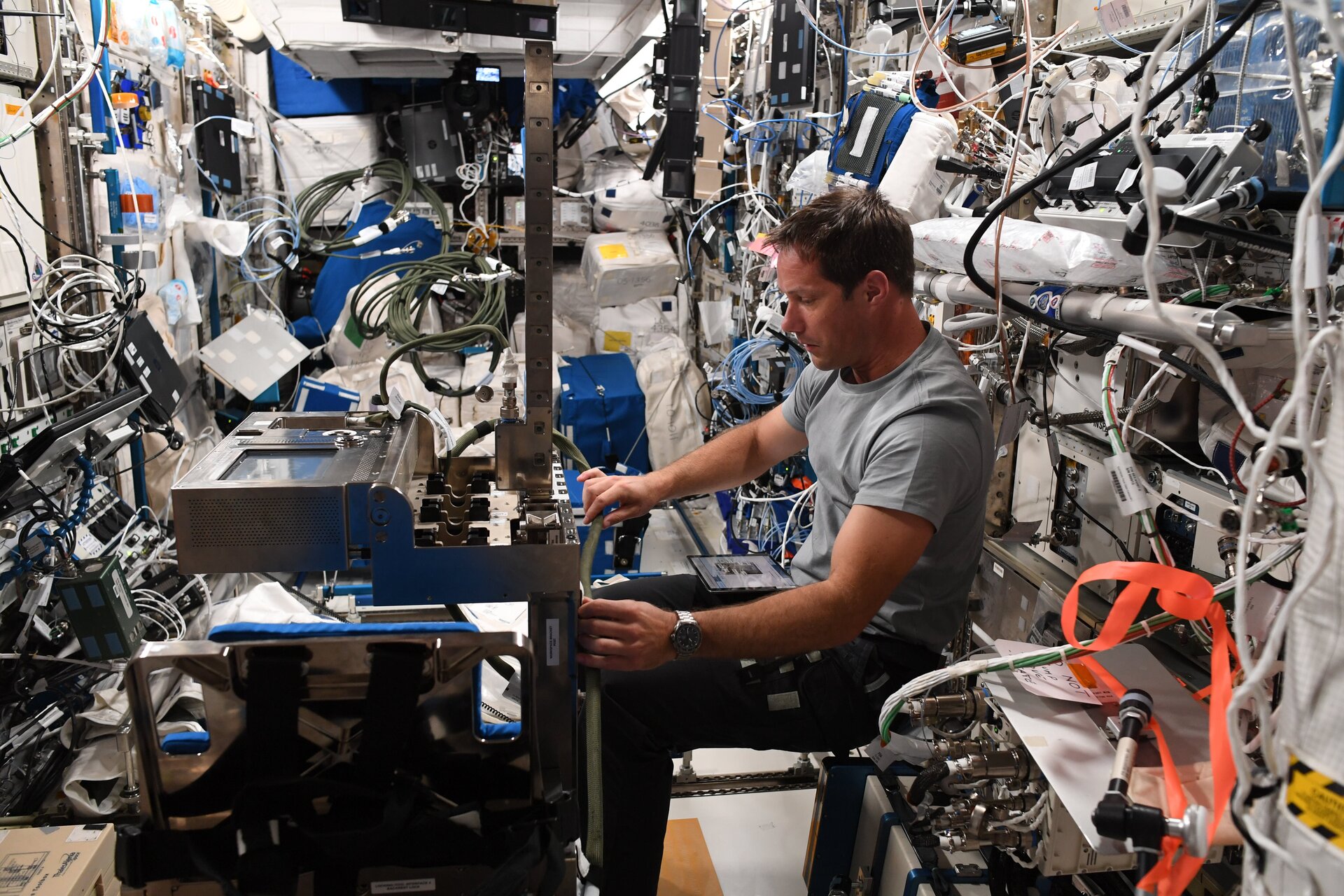
Thomas Pesquet with GRIP experiment
Thank you for liking
You have already liked this page, you can only like it once!
ESA astronaut Thomas Pesquet configures equipment for an experiment called GRIP that studies astronauts' perception of mass and movement and how they interface with the human body and change in microgravity.
Thomas recently shared this image on his social media channels saying: "An old friend of mine: the ESA GRIP experiment! On my first parabolic flight in 2010, we took part in a safety analysis of the hardware, then during my first flight in 2017 I performed the on-orbit commissioning. It has been going strong since with 6 subjects (including ESA astronauts @astro_alex_esa and @astro_luca), and I should be one of the last ones! It is complex, with lots of cables… always hard to manage when you’re free-floating. The experiment is under the responsibility of CADMOS, the French User Operations Centre based in Toulouse. They do an excellent job of sorting out the cables and telling us what goes where."
Follow Thomas and his Mission Alpha on his blog.
Version française :
L'astronaute de l'ESA Thomas Pesquet a publié cette photo sur les réseaux sociaux avec la légende suivante :
"Installée par mes soins lors de Proxima en 2017, l'expérience GRIP est toujours à bord de la Station. Mais notre histoire commune remonte à 2010, lors de mon 1re vol parabolique. Nous avions testé la compatibilité du matériel avec l'impesanteur. 6 astronautes l'ont manipulée depuis, notamment Alex et Luca, et je ne serai probablement pas le dernier. Elle est un peu complexe avec tous ses câbles, et c'est encore plus difficile quand on flotte... GRIP est sous la responsabilité du CADMOS, l'USOC (Centre de soutien aux utilisateurs de systèmes spatiaux) français situé au CNES, à Toulouse. Heureusement pour moi, ils savent exactement où brancher chaque fil !"
Thomas a décollé à destination de la Station spatiale internationale le 23 avril 2021. Plus de 200 expériences sont prévues pendant le séjour de Thomas dans l’espace, dont 40 expériences européennes et 12 nouvelles expériences dirigées par le CNES, l’agence spatiale française.
-
CREDIT
ESA/NASA - T.Pesquet -
LICENCE
ESA Standard Licence
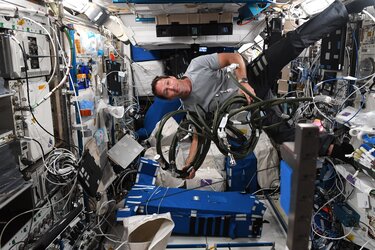
Cable management
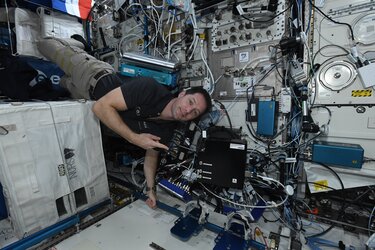
Thomas Pesquet with Lumina
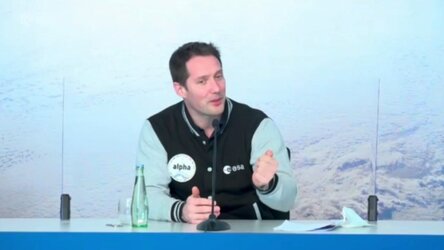
News conference with ESA astronaut Thomas Pesquet
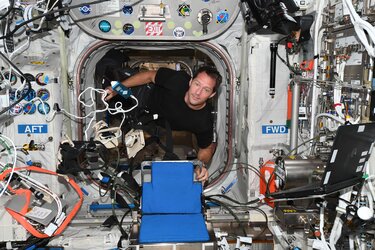
Thomas with Grasp experiment
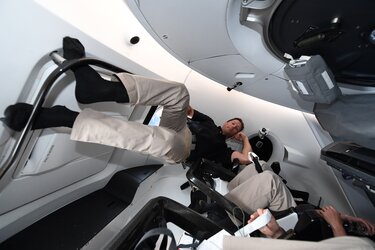














 Germany
Germany
 Austria
Austria
 Belgium
Belgium
 Denmark
Denmark
 Spain
Spain
 Estonia
Estonia
 Finland
Finland
 France
France
 Greece
Greece
 Hungary
Hungary
 Ireland
Ireland
 Italy
Italy
 Luxembourg
Luxembourg
 Norway
Norway
 The Netherlands
The Netherlands
 Poland
Poland
 Portugal
Portugal
 Czechia
Czechia
 Romania
Romania
 United Kingdom
United Kingdom
 Slovenia
Slovenia
 Sweden
Sweden
 Switzerland
Switzerland
























